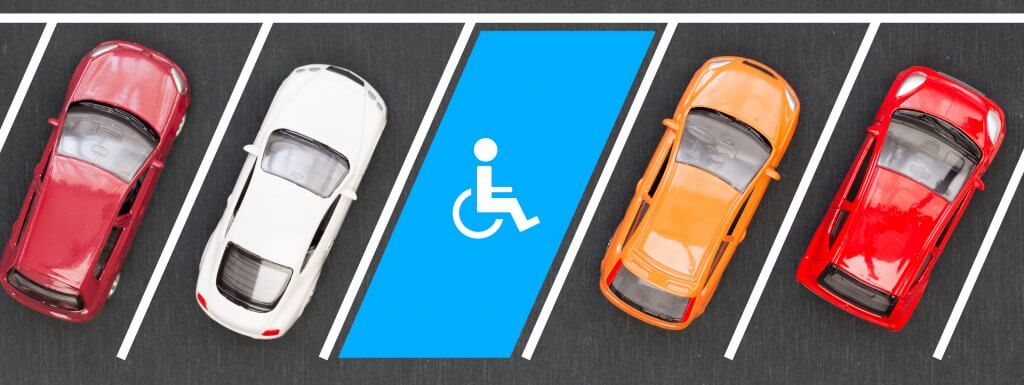
Here at the PHA UK, we’ve had many calls and enquiries about Blue Badges over the years. There’s lots to get your head around, including what they are, how they help, how to claim them, and what to do if you are unsuccessful in your application.
Here, we aim to answer those questions and hopefully a few more – helping you access a really useful benefit that can make life with PH that little bit easier.
In a nutshell, a Blue Badge give you exemption from some of the parking restrictions here in the UK and access to designated parking spaces (labelled as either ‘blue badge’ or ‘disabled’).
The badge is issued by your local council and can only be used if you are driving, or in the car. So if you are a passenger, the person driving is allowed to use it if it will benefit you – for example, to park closer to a destination.
Someone else can also use it if they are picking you up or dropping you off, but you can’t lend it to someone to do shopping for you, for example. You must be in the car that’s using the badge.
You do not need to have a driving license or own a car to claim one.
Please note that if have a badge but no longer need it, you must return it to the council who issued it.
A Blue Badge costs up to £10 in England and £20 in Scotland. It’s free in Wales.
They usually last up to 3 years, and you must reapply for a Blue Badge before your current one expires.
There are a few ways you can qualify for a Blue Badge.
If you are already in receipt of the benefit Personal Independence Payment (PIP) (what used to be known as DLA) you are almost guaranteed to be approved due to the rigorous nature of the benefits application process.
There are certain unique circumstances where you may be refused, for example if you were able to walk hundreds of metres unaided without losing your breath – but for most of our members, this isn’t the case.
However, if you are not in receipt of PIP or DLA, but have considerable difficulty walking, you can certainly still apply, and we’d recommend you do. Just be prepared that you may need to prove that you meet their criteria, so you may require an assessment by a medical professional such as a physiotherapist or occupational therapist.
You can also apply for a Blue Badge if you have a child under the age of 16 with a health condition that affects their mobility.
As well as difficulties caused by your PH, there are other ways you may qualify for a Blue Badge too. These include:

The simplest way to apply is online at GOV.UK (you can renew your badge here too). You can apply for yourself, someone else, or an organisation.
Some councils also let you apply using a paper form – contact your local council to check as some will only allow you to do it online.
You must apply through your local council – your doctor can’t help you get a Blue Badge. Your local council might also arrange an appointment to visit you and they’ll let you know if this is the case.
You’ll need the following when applying for a badge:
If you are renewing your badge you will need the number, expiry date, and local council listed on your current one.
How you pay will depend on your local council and if you live in Northern Ireland, you’ll need to apply in a different way.
A decision is usually made by your local council within 12 weeks.
Your council should tell you why you’re not eligible for a Blue Badge.
You can ask them to reconsider your case if you do not think all the important information you provided was taken into account.
You can also reapply if your mobility problems become more serious.
Blue Badge holders are exempt from certain parking restrictions. This means you can:
Some local councils put additional restrictions on Blue Badge holders. You should check with the local council in the area you’re travelling to find out what their rules are. The scheme does not apply in certain boroughs in London, which offer their own parking concessions.
You can use your blue badge throughout the country, but we would advise checking what the local restrictions are if you are travelling out of your local area.
To find Blue Badge parking bays across the UK, check the GOV UK website.
TOP TIP
Some of our members tell us they find it upsetting and frustrating when they get ‘looks’ or comments from passers by when parking in Blue Badge bays. You may find displaying our bespoke sticker next to your badge a helpful way of communicating that not all disabilities are visible.
This link takes you directly to the government website, where you can find out how your local council operates its Blue Badge scheme.
Use this link to contact your local Citizens’ Advice Bureau for support to complete your application form.
Apply for a disabled person’s bus pass using this link
Still got questions?
We’ll always do our best to help. Contact the PHA UK office team on 01709 761450 or email office@phauk.org